Hampta Pass Trek – All You Need To Know
- Trekking Destinations
-
Jul 09
- Share post
Looking to embark on an adventure that leaves you spellbound at every turn? Welcome to our comprehensive guide on the Hampta Pass Trek – your passport to one of India’s most mesmerising and diverse treks!
This guide is packed with every nugget of information you need – from the cost and best season to undertake this trek to an engaging day-by-day itinerary. We also shed light on the fitness level required, transportation options, and essential highlights of this journey.
This guide is penned with personal experiences and practical advice and promises to smooth your trek planning.
So, whether you are a seasoned trekker or a newbie to high-altitude hiking, strap in for an engaging read that will fuel your wanderlust.
Step into your trekking shoes, tighten your rucksack, and let’s navigate through the captivating landscapes of the Hampta Pass Trek!
- Max Altitude: 14,000 Ft. (4,270M)
- Average Trekking Fees: ₹ 7000 – ₹ 12,000
- Distance: 26 kms
- Difficulty: Difficult
- Duration: 4-5 days
- Ideal For: Beginner & Experienced Trekkers Both
- Best Season: June – September
- Region: Himachal Pradesh
Table of Contents
ToggleHampta Pass Trek: An Overview
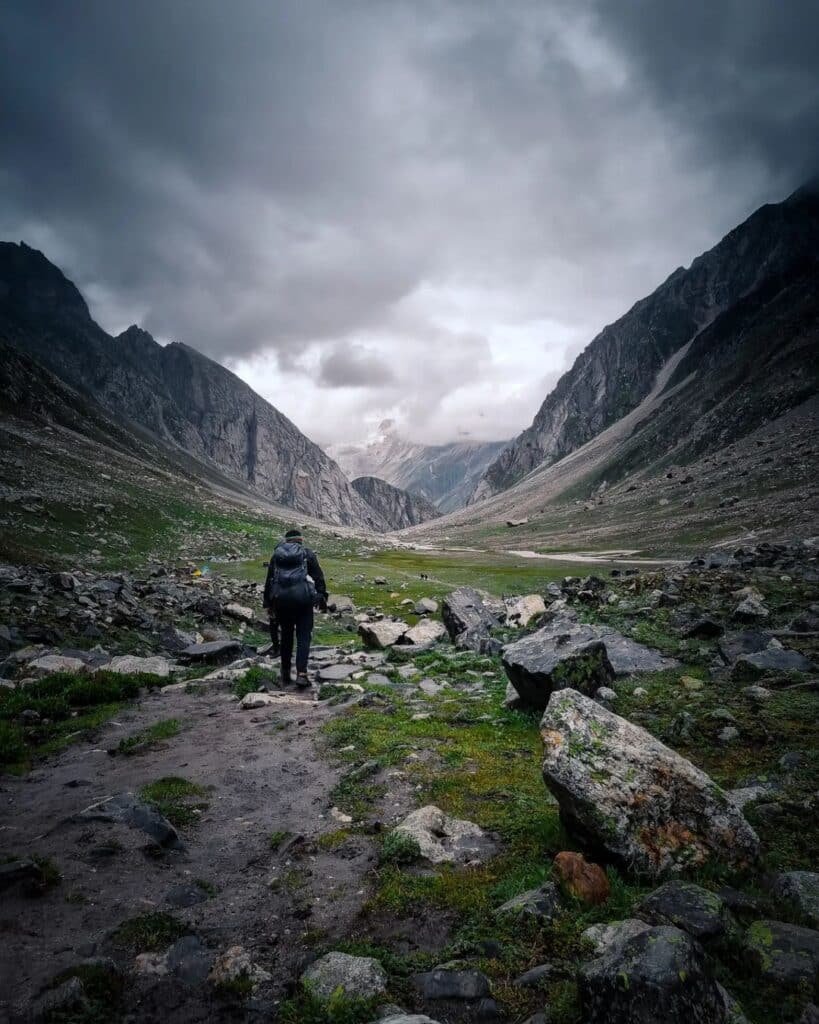
The Hampta Pass Trek is a dynamic and challenging trekking experience located in the Himachal Pradesh region of India. An intriguing part of this trek is the dramatic landscape variation, from the lush green Kullu Valley to the stark desert-like landscape of the Lahaul and Spiti Valleys.
The trek starts from Manali, a bustling hill station known for its scenic beauty. The trail moves through the dense forests of Jobra to the open meadows of Chika and Balu ka Ghera. Trekkers ascend to the high-altitude grazing ground at Shea Goru and experience the snowy and rugged terrain. The trail culminates by crossing the challenging Hampta Pass, a thrilling experience 14,000 feet above sea level.
The Hampta Pass Trek is perfect for both beginners and experienced trekkers due to its moderate difficulty level. This trek offers diverse ecosystems, surreal landscapes, and a walk through clouds. It promises the allure of the Himalayas at its best. The hike usually includes visiting the stunning Chandratal Lake, known for its crystal clear blue waters.
This trek, taking roughly 4-5 days, is best undertaken from June to September, when the weather conditions are most favourable. Overall, the Hampta Pass Trek is a mesmerising journey that promises an unparalleled encounter with the serene beauty of the Himalayas.
Hampta Pass Trek: Difficulty & Duration
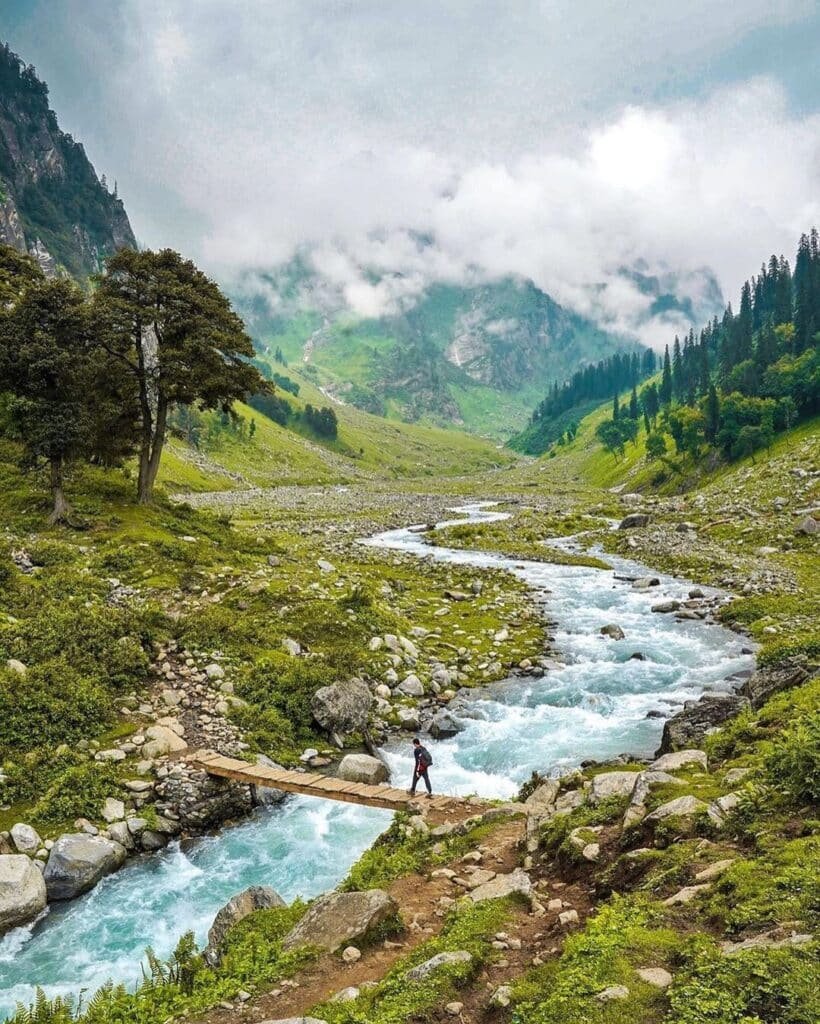
Alright, the Hampta Pass Trek isn’t exactly a cakewalk. It’s set at a moderate level of difficulty. The whole trail stretches around 26 kilometres, and usually, we wrap it up in 4 to 5 days. Now, on any given day, we’re looking at about 5-7 kilometres of a trek. This should take 5-6 hours daily, but it varies depending on your pace and the terrain you’re up against.
The trail’s got its fair share of variety – from lush, thick forests to wide-open meadows and challenging mountain passes. At its peak, the Hampta Pass takes you soaring to about 14,000 feet. The constant change in altitude can catch you off guard, so it’s crucial to acclimatise well to avoid altitude sickness.
Despite its moderate difficulty tag, take this trek seriously. Having a reasonable fitness level before you sign up is a good idea. Get some regular cardio in – think running, cycling, swimming – and sprinkle in strength training for good measure. And squeeze in a few short hikes before this one – it’ll give you a taste of what’s in store.
Keep this in mind – this trek isn’t a race. It’s about enjoying the journey. So, go at your own comfortable pace, take plenty of breaks, and, most importantly, soak in the sheer beauty of the Himalayas. After all, these experiences come in only some days.
Best Season for the Hampta Pass Trek
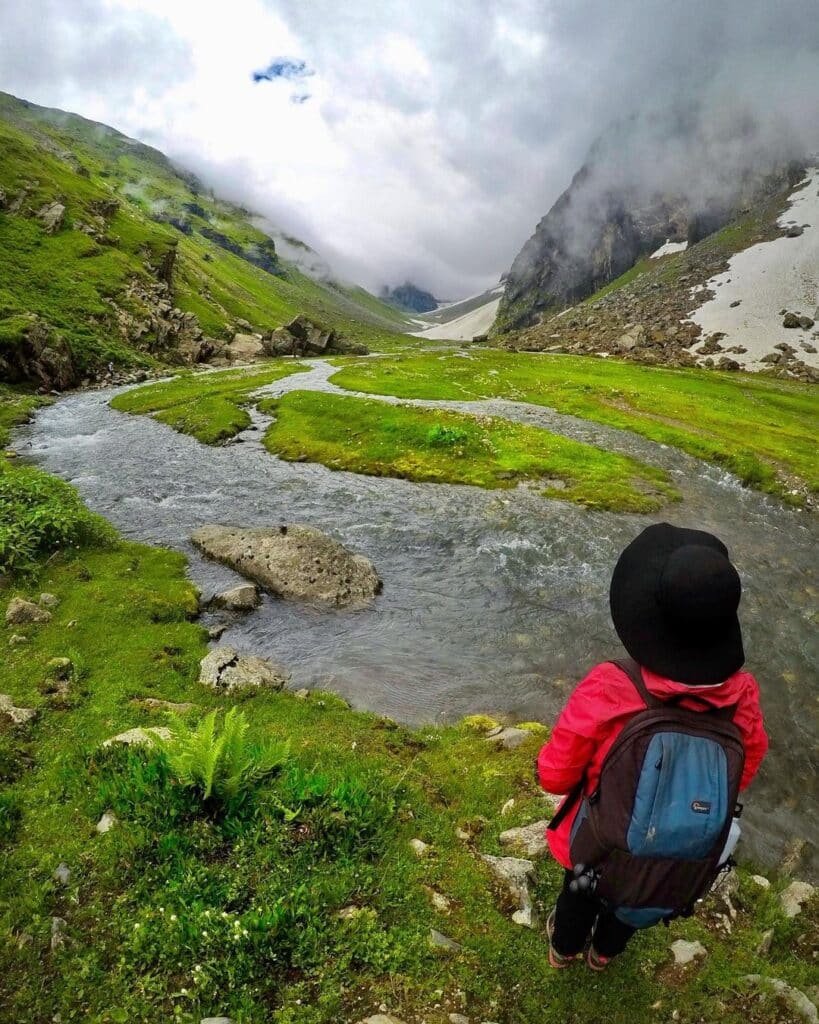
The best time to take on the Hampta Pass Trek is during the monsoon season, from June to September. This is when the weather is just suitable for hiking. The average temperature during these months ranges between 12-20 degrees Celsius during the day. It can drop to about -2 to 6 degrees Celsius at night.
Now, why is monsoon the best time? Well, the main reason is the beauty of the place. During monsoon, the whole area comes alive with lush greenery. You’ll see lots of pretty flowers blooming everywhere. The rivers and waterfalls are complete and look beautiful too. The mountains and valleys are covered in a fresh, green blanket. It’s like nature puts on a grand show just for you!
But every coin has two sides. Monsoon also means rain, and that can make the trail slippery. Walking can get tricky, and you’ll have to watch your step. Sometimes, the rain can even make you halt your trek for a while. It’s essential to carry rain gear to keep you dry. Also, nights can get quite cold, so have warm clothes.
But all in all, the monsoon season adds a lot of charm to the trek. Yes, there are challenges, but they’re worth it. You’ll take back home beautiful memories and amazing stories!
Budget & Costing
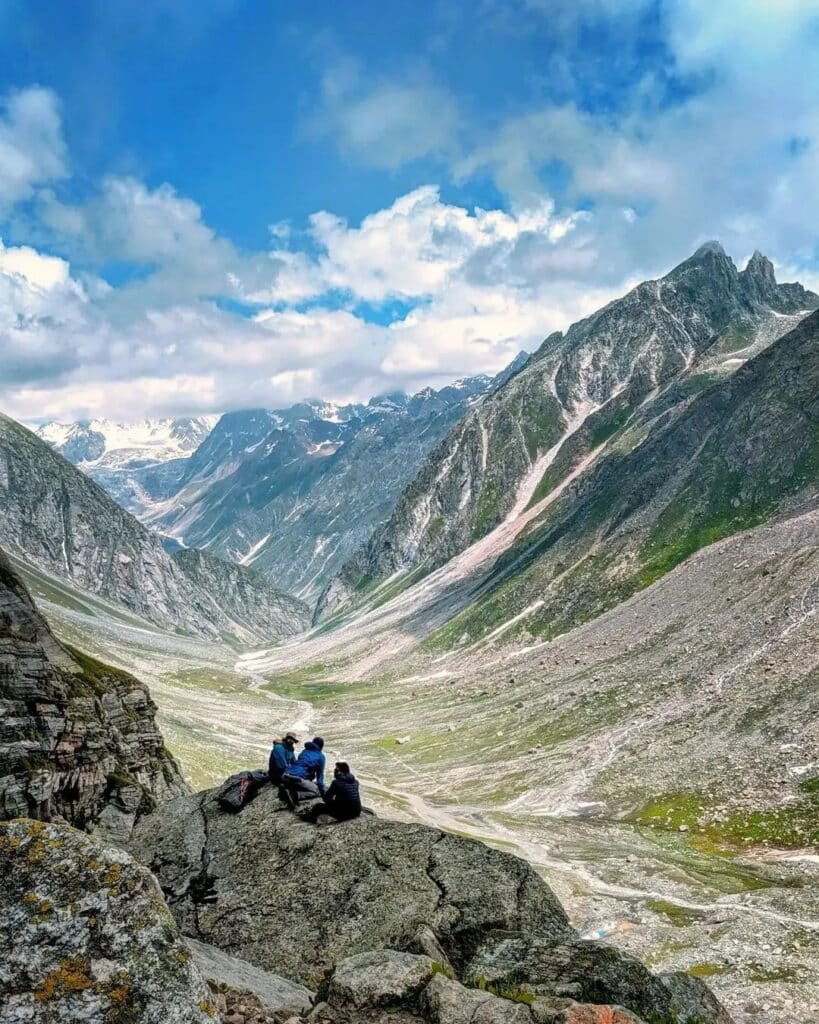
- Average Trekking Fees: Planning a trek requires careful budgeting and understanding costs. For the Hampta Pass Trek, you’ll find that most trekking organisations in India charge a fee ranging between ₹8,000 – ₹12,000. This fee covers guides, permits, food, and camping or lodging during the trek.
- Transportation: Getting to the starting point in Manali will involve transportation costs. The price can vary significantly depending on where you’re travelling from and your choice of transport – be it flights, trains, or buses. It’s worth checking out different options and booking in advance for the best rates.
- Accommodation: While on the trek, your accommodation is included in the fees, so there are no extra charges. However, if you plan to stay in Manali before or after the trek, expect to pay around ₹1200 – ₹2000 for a comfortable private room in a decent hotel or hostel.
- Trekking Gear: Next up is the equipment and gear. You’ll need appropriate clothing, trekking shoes, and other gear. If you don’t want to buy these, consider renting. It can help you save money, and many stores in Manali offer this service.
- Food: Although food and water are covered in the trekking fees for the duration, you should carry some extra snacks for those sudden hunger pangs or energy boosts.
- Miscellaneous: Lastly, remember to set aside a budget for various expenses. These can include personal purchases, additional activities, or unforeseen costs. Planning your budget in advance ensures a smooth and stress-free trekking experience!
How To Reach The Start Point?
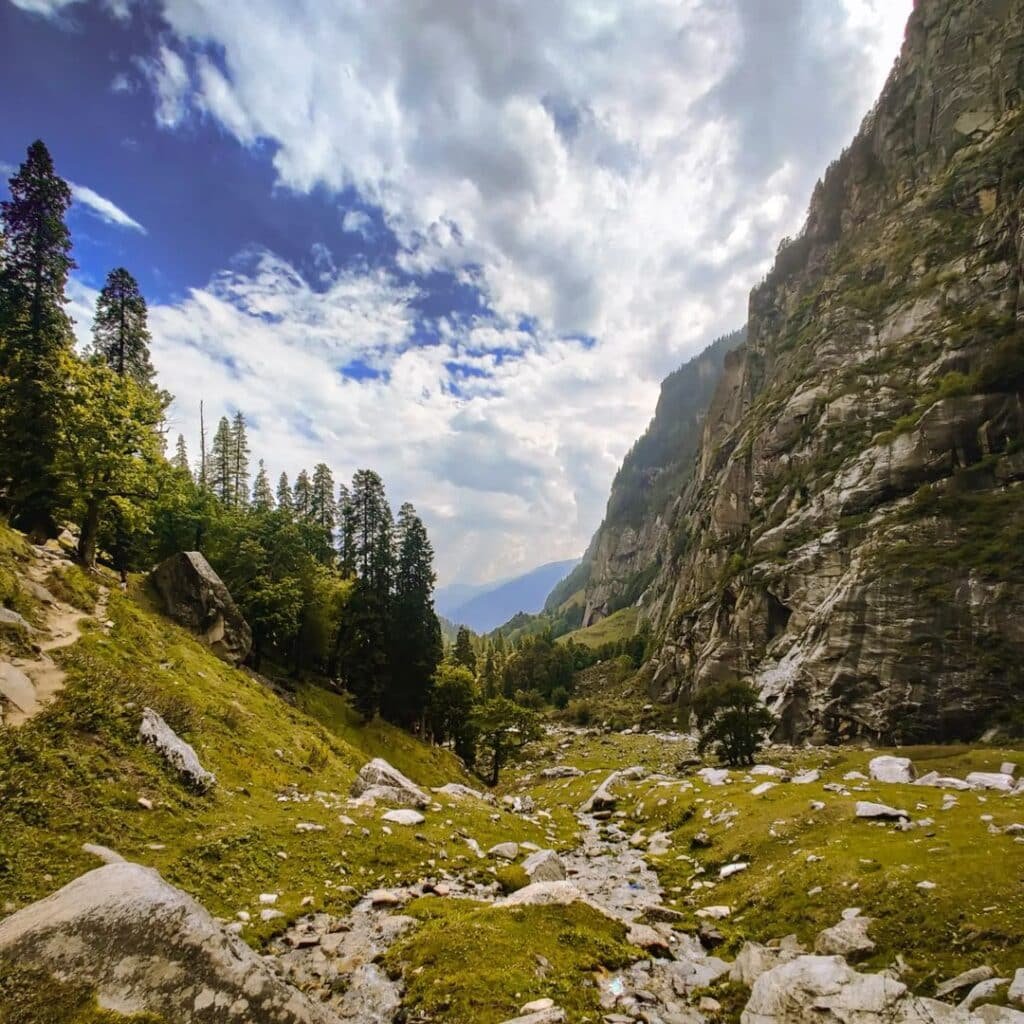
- By Flight: Taking a flight can be a quick and efficient way to reach Manali, the trek starting point of the trek. Major airlines operate regular flights to Delhi and Chandigarh from various cities in India. From either town, you can take an overnight bus to Manali. This entire journey takes less time compared to other modes of transport, making it the fastest but not necessarily the cheapest option. The bus journey is quite scenic and comfortable, with buses equipped with recliner seats.
- By train: If you prefer a more budget-friendly option, consider travelling by train. You can book a train ticket to Chandigarh or Delhi. From there, you can catch an overnight bus to Manali. Trains offer a cheaper alternative to flights, though the travel time will be longer. This choice provides a good balance of cost and comfort.
- By Bus: For the most economical option, consider taking a bus. There are regular bus services from major cities to Manali. This journey might be longer and less comfortable than the other options, but it will likely be the most affordable. If you’re on a tight budget and have some time to spare, this option could work best for you.
Most trekking organisations offer a pick-up and drop-off service from Manali, which will help streamline your journey. After reaching Manali, you’re all set to begin the exciting Hampta Pass Trek. Regardless of your chosen mode of transport, you’re in for an adventurous journey surrounded by stunning landscapes!
Detailed Hampta Pass Trek Itinerary
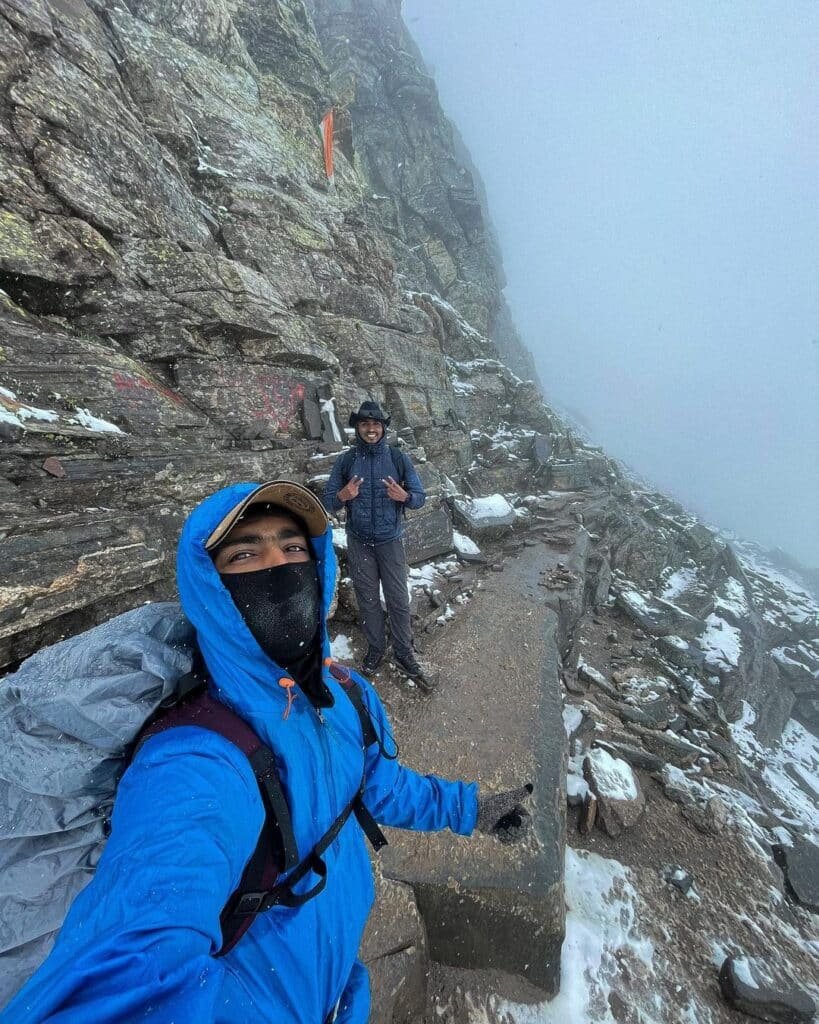
Day 1: Manali to Jobra to Chika (Distance: 3 KM | Time: 2 Hours)
Your journey starts in Manali (which acts as a base camp for many trekking organisations). The trekkers drive from Manali to Jobra, about two hours away. This scenic road journey boasts about 42 winding hairpin bends, offering breathtaking panoramas of the picturesque Kullu Valley.
From Jobra, the trek begins, and you move towards your first campsite at Chika, a moderate 2-hour hike covering about 3 km. Here, you get to enjoy the beautiful Rani Nallah and towering peaks.
Day 2: Chika to Balu Ka Ghera (Distance: 8 KM | Time: 5-6 Hours)
On the second day, you head from Chika to Balu Ka Ghera. This is a 5-6 hour trek covering around 8 km. During this trek, you cross the lush green meadows and river flows, finally camping at the sand-cleared grounds of Balu Ka Ghera, preparing for the challenging day ahead. From here you get mind-blowing views of the Deo Tibba peak.
Day 3: Balu Ka Ghera to Shea Goru via Hampta Pass (Distance: 7 KM | Time: 10 Hours)
This is the most challenging yet exciting day of the trek. You start early from Balu Ka Ghera, cross the Hampta Pass, and then descend to the campsite at Shea Goru. This long day takes about 10 hours to cover 7 km. However, the sense of accomplishment upon reaching the pass and the stunning views of Lahaul and Spiti Valley make it all worth it.
Day 4: Shea Goru to Chatru, Drive to Chandratal Lake (Distance: 7 KM | Time: 4-5 Hours)
The fourth day’s trek is downhill from Shea Goru to Chatru, a 4-5 hour journey covering around 7 km. You walk along the riverside, enjoy the contrasting barren landscapes of Lahaul and Spiti, and witness the Chandra Bhaga mountain ranges. From Chatru, you’ll be driven to Chandratal Lake, a mesmerising high-altitude lake with crystal-clear waters.
Day 5: Drive from Chandratal Lake to Manali
On the last day, you drive back from Chandratal Lake to Manali. This scenic drive through the Rohtang Pass will provide one last dose of the majestic mountains before you conclude your journey.
Remember, this is a typical itinerary and may vary based on the trekking company’s plan or the weather conditions. Each day of the Hampta Pass Trek presents unique highlights and challenges, making the journey a memorable adventure.
Highlights of the Hampta Pass Trek
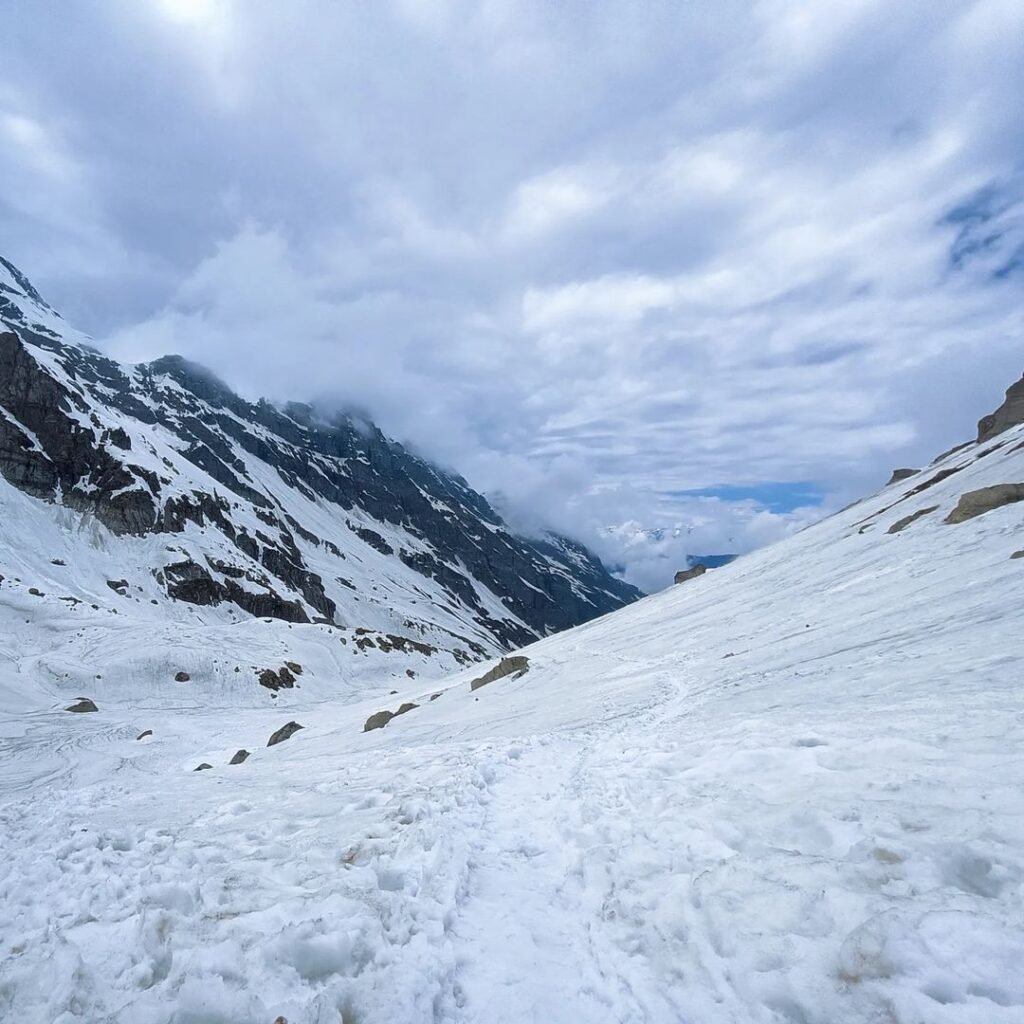
The Hampta Pass Trek is a treasure trove of diverse experiences and mesmerising sights. Here are some of the standout highlights that make this trek truly special:
- Manali: The trek begins from the charming hill station of Manali, which delights visitors with its apple orchards, serene rivers, and lush green meadows. Manali is not just a starting point but a beautiful destination worth exploring before you start your trek.
- Changing Landscapes: One of the most striking features of the Hampta Pass Trek is the dramatic shift in landscapes. As you progress on the trek, the scenery changes from the verdant Kullu Valley to the stark, arid terrain of the Lahaul Valley and Spiti, keeping trekkers engrossed throughout the journey.
- Rivers and Glaciers: This trek has you crossing sparkling rivers and walking on glaciers. Navigating through these elements is an unforgettable experience that makes the outing even more exciting.
- Hampta Pass: At an elevation of 14,000 feet, crossing the Hampta Pass is no small feat. The panoramic views of the surrounding peaks from the past are nothing short of awe-inspiring, making this a significant highlight of the trek.
- Chandratal Lake: Often included in the trek itinerary, a visit to the crystal-clear, blue waters of Chandratal Lake is a delightful bonus. This high-altitude lake’s ethereal beauty is the perfect capstone to the adventurous trek.
- Shea Goru Campsite: This is the most challenging and adventurous day as you cross the Hampta Pass and reach Shea Goru. The campsite is in a narrow valley with mountains rising sharply on both sides where you can see snow capped mountains in the month of June & July. It’s quite a contrast from the greenery of the Kullu Valley.
These highlights make the Hampta Pass Trek not just a physical journey but an enriching experience that acquaints trekkers with the multifaceted beauty of the Himalayas.
Essential Gear and Equipment for the Hampta Pass Trek
Before embarking on the trek, it is essential to pack the right gear and equipment to ensure a safe and comfortable journey. Here is a list of items you should consider carrying:
- Trekking shoes with good ankle support
- 45L-50L Rucksack with rain cover
- Trekking gaiters
- Warm and waterproof clothing layers
- Sleeping bag suitable for sub-zero temperatures
- Trekking poles for better stability on uneven terrains
- UV-protected sunglasses and sunscreen
- Water bottles and water purification tablets
- Headlamp or flashlight with extra batteries
- First aid kit with essential medications
- Portable power bank for charging electronic devices
Safety Tips & Precautions
While embarking on any trek, safety should always be a top priority. Here are some essential safety tips to keep in mind during the Hampta Pass Trek:
- Trek with an experienced guide and follow the instructions of the trek leaders.
- Stay hydrated and carry an adequate supply of water.
- Pack light and carry only the essential items.
- Dress in layers to adapt to changing weather conditions.
- Respect the environment and maintain cleanliness.
- Inform someone about your trekking plans and expected return.
- Stay updated about weather conditions and local regulations.
- Avoid alcohol and smoking during the trek.
Conclusion
We hope this comprehensive guide has illuminated the many facets of the Hampta Pass Trek for you.
Embarking on this journey is not just about reaching the destination; it’s about every verdant valley, every towering peak, every shimmering stream, and the ever-changing landscapes that keep you company along the way.
It’s about pushing your limits, testing your resilience, and experiencing the profound serenity that only the majestic Himalayas can offer.
Whether you’re a seasoned trekker or someone lacing up their boots for the first time, this trek will leave you with unforgettable memories and a yearning to return.
So, prepare well, respect nature, and let the magic of the Hampta Pass engulf you. Happy trekking!
FAQs
The Hampta Pass Trek is considered moderate in terms of difficulty. It does require a decent level of physical fitness due to the high altitude and some steep sections. Still, beginners with good preparation can also undertake it.
The Hampta Pass Trek typically takes 4-5 days, covering a distance of approximately 26 kilometres from start to finish.
Hampta Pass is renowned for its dramatic landscape variation, ranging from lush green valleys to arid desert-like regions and exciting river crossings. The trek offers stunning views of Himalayan peaks, glaciers, and the ethereal Chandratal Lake.
The Hampta Pass is 14,000 feet (4,270 meters) above sea level.
Comments
Add a comment
Leave a Reply · Cancel reply
This site uses Akismet to reduce spam. Learn how your comment data is processed.
